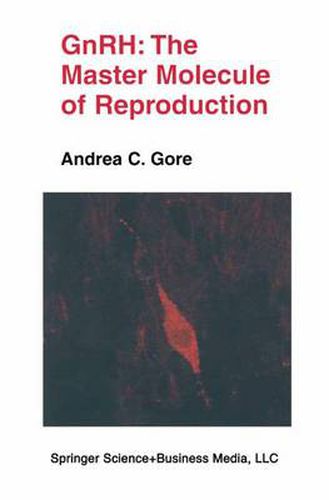Readings Newsletter
Become a Readings Member to make your shopping experience even easier.
Sign in or sign up for free!
You’re not far away from qualifying for FREE standard shipping within Australia
You’ve qualified for FREE standard shipping within Australia
The cart is loading…






This title is printed to order. This book may have been self-published. If so, we cannot guarantee the quality of the content. In the main most books will have gone through the editing process however some may not. We therefore suggest that you be aware of this before ordering this book. If in doubt check either the author or publisher’s details as we are unable to accept any returns unless they are faulty. Please contact us if you have any questions.
Gonadotropin-releasing hormone (GnRH) cells are the key regulators of reproductive function in all vertebrate organisms. The GnRH molecule is synthesized in a small number of neurons in rostral hypothalamic regions of the brain. In mammals, these neurons release the GnRH decapeptide into the portal capillary system leading to the anterior pituitary gland. There, GnRH causes the release of the gonadotropins, luteinizing hormone (LH) and follicle-stimulating hormone (FSH), which in turn act upon the gonads to stimulate their maturation, and to cause synthesis of sex steroid hormones, estrogen, progesterone and testosterone. Although each of the levels of the hypothalamic-pituitary-gonadal axis is critical for reproductive function, GnRH neurons play the primary role in the control of reproductive maturation and adult reproductive function, and may even play a role in reproductive senescence. This text aims to bring together the large and diverse literature of both laboratory and applied research that focuses on these unique cells. It should provide basic background into reproductive neuroendocrinology, as well as specifics regarding the role of GnRH neurons in the control of reproduction. Students studying endocrinology, reproduction, neuroendocrinology or molecular endocrinology will benefit from this book. In addition, the book takes a multi-species approach which should be useful both to basic researchers as well as clinicians. Whenever possible, species differences and similarities will be presented, and if possible, studies on humans, or the clinical relevance of basic research findings to humans will be discussed (such as the treatment of reproductive disorders such as abnormalities in pubertal development, or infertility).
$9.00 standard shipping within Australia
FREE standard shipping within Australia for orders over $100.00
Express & International shipping calculated at checkout
This title is printed to order. This book may have been self-published. If so, we cannot guarantee the quality of the content. In the main most books will have gone through the editing process however some may not. We therefore suggest that you be aware of this before ordering this book. If in doubt check either the author or publisher’s details as we are unable to accept any returns unless they are faulty. Please contact us if you have any questions.
Gonadotropin-releasing hormone (GnRH) cells are the key regulators of reproductive function in all vertebrate organisms. The GnRH molecule is synthesized in a small number of neurons in rostral hypothalamic regions of the brain. In mammals, these neurons release the GnRH decapeptide into the portal capillary system leading to the anterior pituitary gland. There, GnRH causes the release of the gonadotropins, luteinizing hormone (LH) and follicle-stimulating hormone (FSH), which in turn act upon the gonads to stimulate their maturation, and to cause synthesis of sex steroid hormones, estrogen, progesterone and testosterone. Although each of the levels of the hypothalamic-pituitary-gonadal axis is critical for reproductive function, GnRH neurons play the primary role in the control of reproductive maturation and adult reproductive function, and may even play a role in reproductive senescence. This text aims to bring together the large and diverse literature of both laboratory and applied research that focuses on these unique cells. It should provide basic background into reproductive neuroendocrinology, as well as specifics regarding the role of GnRH neurons in the control of reproduction. Students studying endocrinology, reproduction, neuroendocrinology or molecular endocrinology will benefit from this book. In addition, the book takes a multi-species approach which should be useful both to basic researchers as well as clinicians. Whenever possible, species differences and similarities will be presented, and if possible, studies on humans, or the clinical relevance of basic research findings to humans will be discussed (such as the treatment of reproductive disorders such as abnormalities in pubertal development, or infertility).